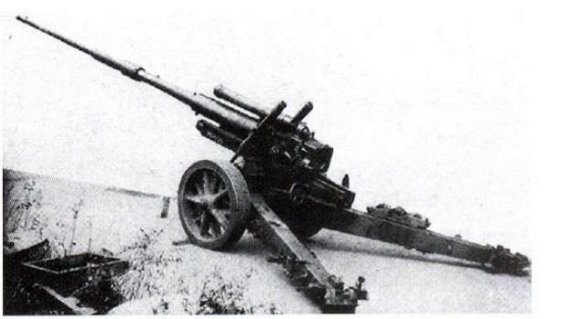8.1cm PAW L/105
This weapon never saw service.
The weapon was photographed in a German test ground after the war and identified as the 8.1cm PAW L/105; nothing more is known about it. No postwar reports or interrogations have thrown any light on the weapon, and the only related piece of information was discovered during examination of microfilm of Krupp’s ammunition design department drawings. This revealed a single drawing of a hemispherical-based hollow charge shell weighing 3.00kg(6.62lb) and classified as 8.1cm HoL Gr L/3.1 fur PAW. The 8cm PAW 600 was ruled out because the shell was fitted with a driving band-but by the same token could it have been for the PAW L/105 which, although of the correct calibre, was called a werfer, which implied a smoothbore? The PAW L/105 ordnance bore no resemblance to any service weapon. It was obviously built in two pieces, a common German practice that enabled long guns to be made on short lathes, and it appears to have been jacketed. The carriage was an amalgam of service components and specially-made parts; the wheels were those of the 10cm K 18 and the cradle and limber appear to have been taken from the 10cm s FH 18. The whole weapon had a purposeful air, but it would probably have been a cumbersome beast to handle. The gun was disconnected from the recoil system for travelling, doubtless to prevent whip in the barrel, but such a time-consuming manoeuver has no place on an anti-tank gun. On the. available evidence, it seems likely that the 8.1cm PAW was a prototype that was abandoned as too unwieldy; it must, however, have had a formidable performance.
